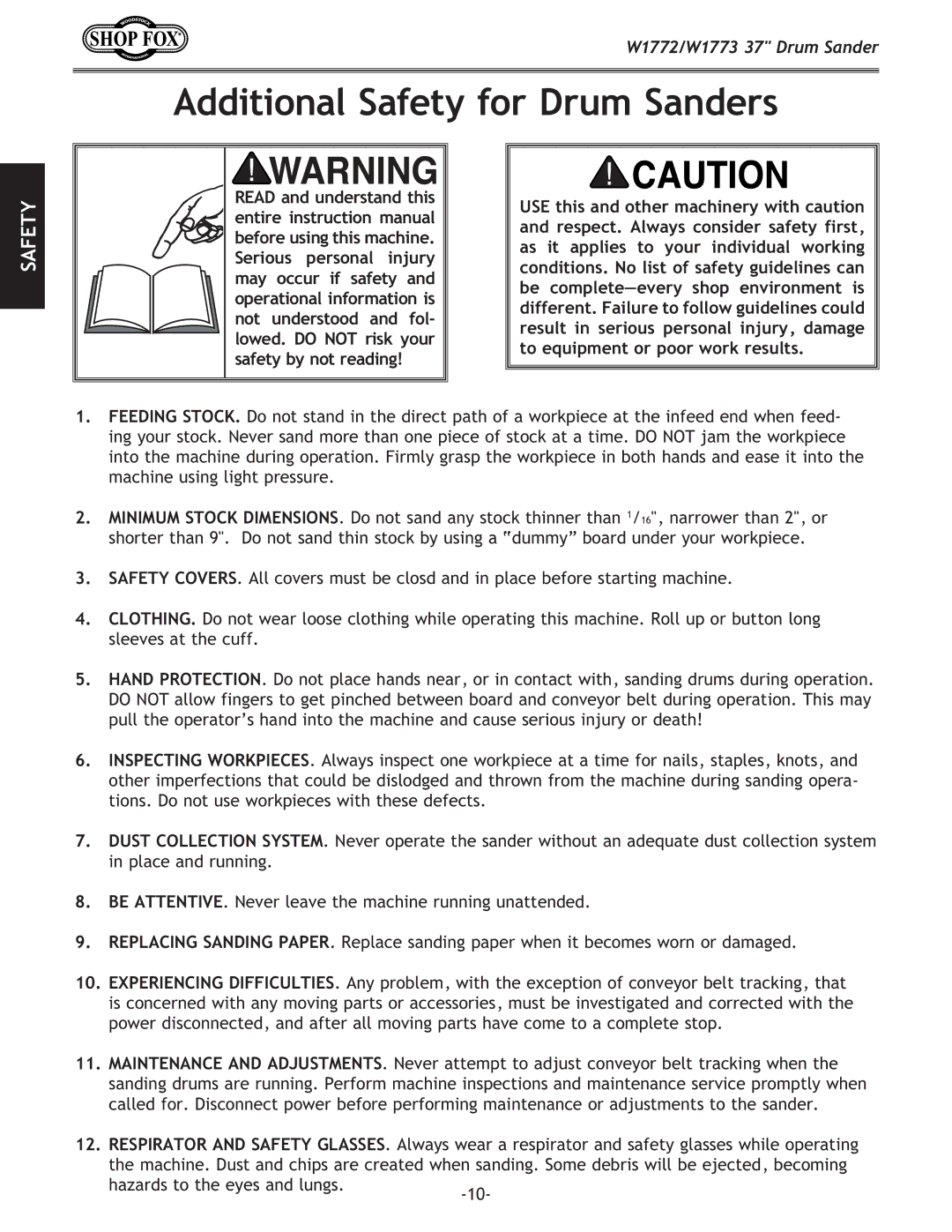
W1772/W1773 37" Drum Sander
Additional Safety for Drum Sanders
SAFETY
READ and understand this entire instruction manual before using this machine. Serious personal injury may occur if safety and operational information is not understood and fol- lowed. DO NOT risk your safety by not reading!
USE this and other machinery with caution and respect. Always consider safety first, as it applies to your individual working conditions. No list of safety guidelines can be
1.FEEDING STOCK. Do not stand in the direct path of a workpiece at the infeed end when feed- ing your stock. Never sand more than one piece of stock at a time. DO NOT jam the workpiece into the machine during operation. Firmly grasp the workpiece in both hands and ease it into the machine using light pressure.
2.MINIMUM STOCK DIMENSIONS. Do not sand any stock thinner than 1/16", narrower than 2", or shorter than 9". Do not sand thin stock by using a “dummy” board under your workpiece.
3.SAFETY COVERS. All covers must be closd and in place before starting machine.
4.CLOTHING. Do not wear loose clothing while operating this machine. Roll up or button long sleeves at the cuff.
5.HAND PROTECTION. Do not place hands near, or in contact with, sanding drums during operation. DO NOT allow fingers to get pinched between board and conveyor belt during operation. This may pull the operator’s hand into the machine and cause serious injury or death!
6.INSPECTING WORKPIECES. Always inspect one workpiece at a time for nails, staples, knots, and other imperfections that could be dislodged and thrown from the machine during sanding opera- tions. Do not use workpieces with these defects.
7.DUST COLLECTION SYSTEM. Never operate the sander without an adequate dust collection system in place and running.
8.BE ATTENTIVE. Never leave the machine running unattended.
9.REPLACING SANDING PAPER. Replace sanding paper when it becomes worn or damaged.
10.EXPERIENCING DIFFICULTIES. Any problem, with the exception of conveyor belt tracking, that is concerned with any moving parts or accessories, must be investigated and corrected with the power disconnected, and after all moving parts have come to a complete stop.
11.MAINTENANCE AND ADJUSTMENTS. Never attempt to adjust conveyor belt tracking when the sanding drums are running. Perform machine inspections and maintenance service promptly when called for. Disconnect power before performing maintenance or adjustments to the sander.
12.RESPIRATOR AND SAFETY GLASSES. Always wear a respirator and safety glasses while operating the machine. Dust and chips are created when sanding. Some debris will be ejected, becoming
hazards to the eyes and lungs.
